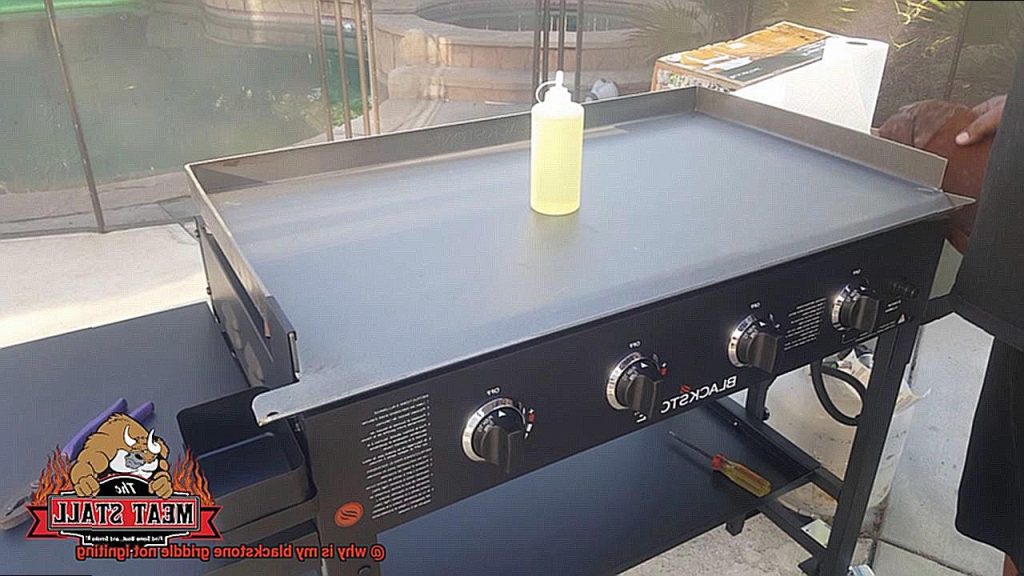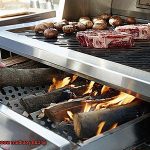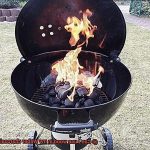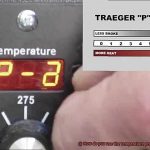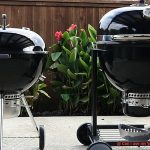Are you excited to start cooking up a storm on your trusty Blackstone griddle, only to find out that it’s not igniting? Don’t let this setback ruin your culinary aspirations. A non-igniting griddle can be frustrating, but fear not because we’ve got you covered.
There are several reasons why your Blackstone griddle may not light up, from gas supply issues to blocked burners and even a faulty spark igniter. But don’t throw in the towel just yet. With a bit of troubleshooting, most of these issues can be fixed easily.
In this blog post, we’ll delve into the possible culprits behind your griddle’s ignition problems and provide practical tips to get it back in action. So, roll up those sleeves and join us as we explore the nitty-gritty of Blackstone griddles.
Whether you’re whipping up some breakfast or dinner delights, our comprehensive guide will help you diagnose and fix your griddle in no time. From identifying the root cause of the problem to offering practical solutions, we’ve got everything covered. So let’s get started and reignite that flame.
Contents
Check the Propane Tank
But before you start to panic, take a deep breath and check your propane tank – it’s often the culprit behind the problem.
To begin, turn off the gas valve on the tank and disconnect the hose. Take a close look at the hose for any signs of damage or wear, and if it looks good, reconnect it to the tank and turn on the gas valve. Listen for a hissing sound to confirm that gas is flowing into the hose. If you don’t hear anything, your propane tank may be empty or malfunctioning.
If you’ve confirmed that your propane tank is full and functioning properly, move on to inspecting the regulator. The regulator is responsible for regulating the pressure of the gas as it flows into your griddle. A malfunctioning regulator can cause your griddle to fail to ignite.
To check the regulator, turn off the gas valve on the propane tank and disconnect it from both the tank and griddle. Look for any signs of damage or wear, and make sure there’s no debris or rust inside. Reconnect the regulator to both the tank and griddle, then turn on the gas valve.
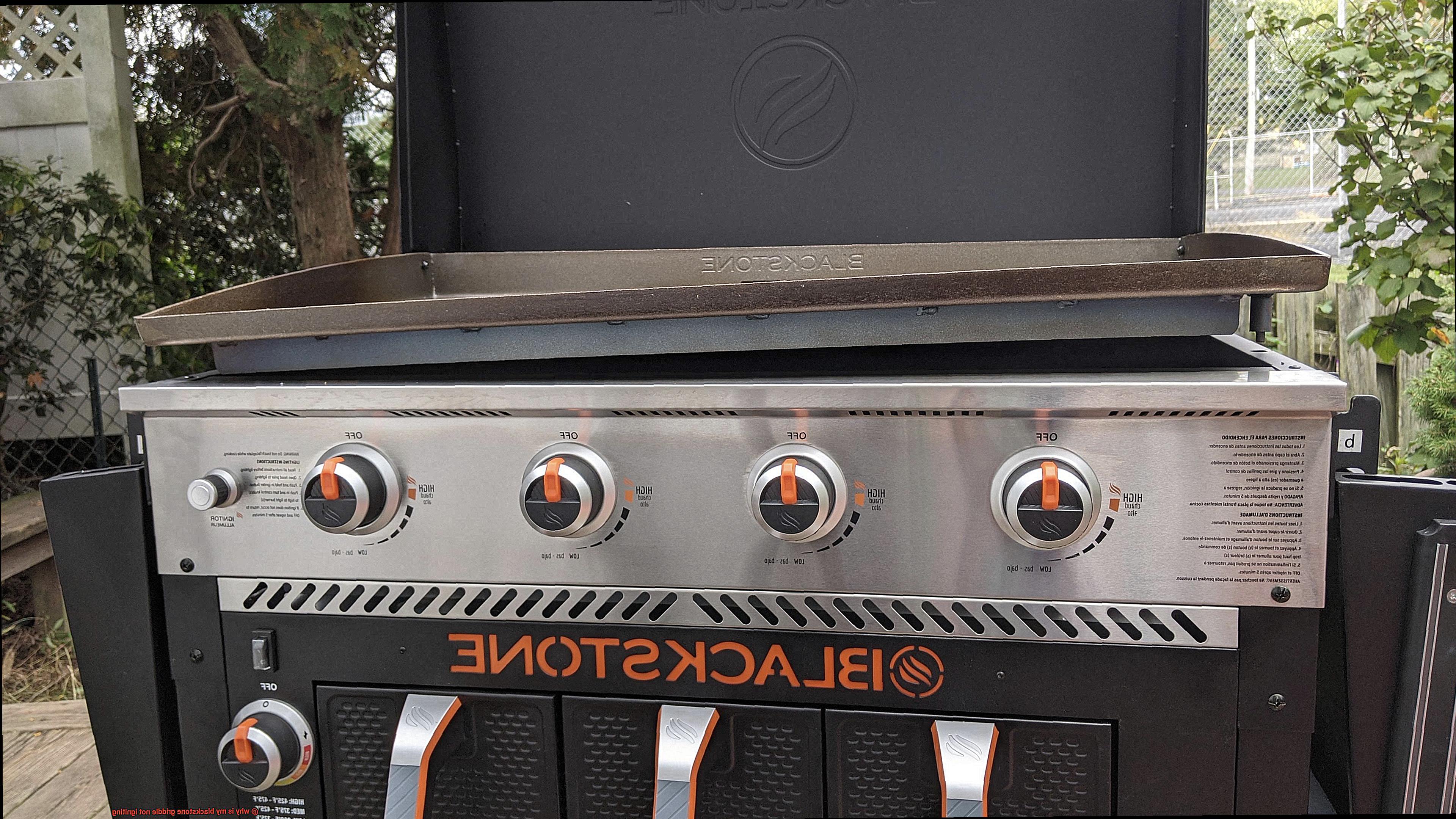
If you’ve gone through these steps and your Blackstone griddle still won’t ignite, don’t worry – there are other common issues that could be causing the problem. Check your fuel line for any blockages, and make sure your burners are not clogged. If none of these issues seem to be the cause of your problem, it may be time to call in a professional for further troubleshooting.
Inspect the Fuel Line
Inspecting the fuel line is a crucial step in identifying and fixing the problem.
Don’t skip the first step – inspect the fuel line for any visible signs of damage. Keep an eye out for cracks, kinks, or leaks as these can prevent propane or natural gas from reaching the burners. If you spot any of these issues, immediately replace the fuel line before attempting to ignite your griddle.
Next, check that the fuel valve is open and that there is enough gas in the tank. A partially closed valve or an empty tank can also cause ignition problems. Don’t let your BBQ plans go up in smoke.
If the fuel line appears to be in good condition, don’t forget to clear any obstructions in the gas ports of the burners. Over time, debris such as grease and food particles can accumulate in these ports, preventing the flow of gas. Use a pipe cleaner or compressed air to get rid of any blockages.
Safety should always be top of mind when working with gas appliances like a Blackstone griddle. If you’re using a propane tank, make sure it is securely connected to the griddle and that the valve on the tank is fully open. Failure to do so can cause ignition problems and dangerous gas leaks.
To wrap up, here’s a quick checklist for inspecting your fuel line:
- Check for visible signs of damage
- Ensure that the fuel valve is open and that there’s enough gas in the tank
- Clear any obstructions in the gas ports of the burners
- Double-check that a propane tank is securely connected and its valve is fully open
Clean the Burner
A clean burner is crucial to ensure that your griddle ignites properly and provides you with a consistent flame. So, let’s dive into the steps you need to take to clean the burner.
Firstly, safety always comes first. Turn off the gas supply and disconnect the propane tank before proceeding with cleaning the burner. Once you’ve done that, remove the griddle top to access the burner underneath.
The next step is to use a soft-bristled brush or cloth to gently scrub away any debris or buildup on the burner surface. Be careful not to damage the small holes that allow gas to flow through and ignite. These holes are vital for proper functioning of your griddle, so take care while cleaning.
After cleaning the burner surface, inspect it for any signs of damage or wear and tear. If you notice any cracks or corrosion, it may be time to replace the burner entirely. Don’t worry; Blackstone offers replacement parts that you can order directly from them or through a third-party retailer.
Once you’ve finished cleaning and inspecting the burner, it’s time to reassemble your griddle and test it out to ensure that it ignites correctly. If you’re still experiencing issues with ignition, there may be other factors at play such as a faulty ignition system or a problem with your propane tank. In these cases, we recommend consulting a professional for assistance.
Here are some additional tips to keep in mind when cleaning your burner:
- Clean your burner regularly to avoid any buildup that can clog the small holes.
- Use a gentle touch when cleaning the burner surface to avoid damaging it.
- Always prioritize safety by turning off the gas supply and disconnecting the propane tank before cleaning.
- Inspect your burner periodically for any signs of damage or wear and tear.
Ignition System Issues
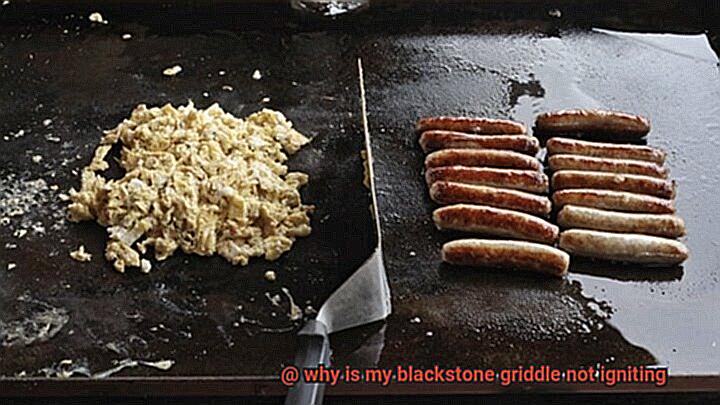
You’re eager to get cooking, but your griddle won’t cooperate. Fear not, my friends. I’m here to walk you through some of the most common ignition system issues that may be causing your griddle to fail.
First on the list is the battery. It may seem like a basic issue, but a dead or low-powered battery can be the root cause of your ignition failure. The battery is responsible for sparking the burner, so if it’s lacking power, it won’t produce enough spark to get your griddle going. The solution? Swap out that old battery for a fresh one, and you should be good to go.
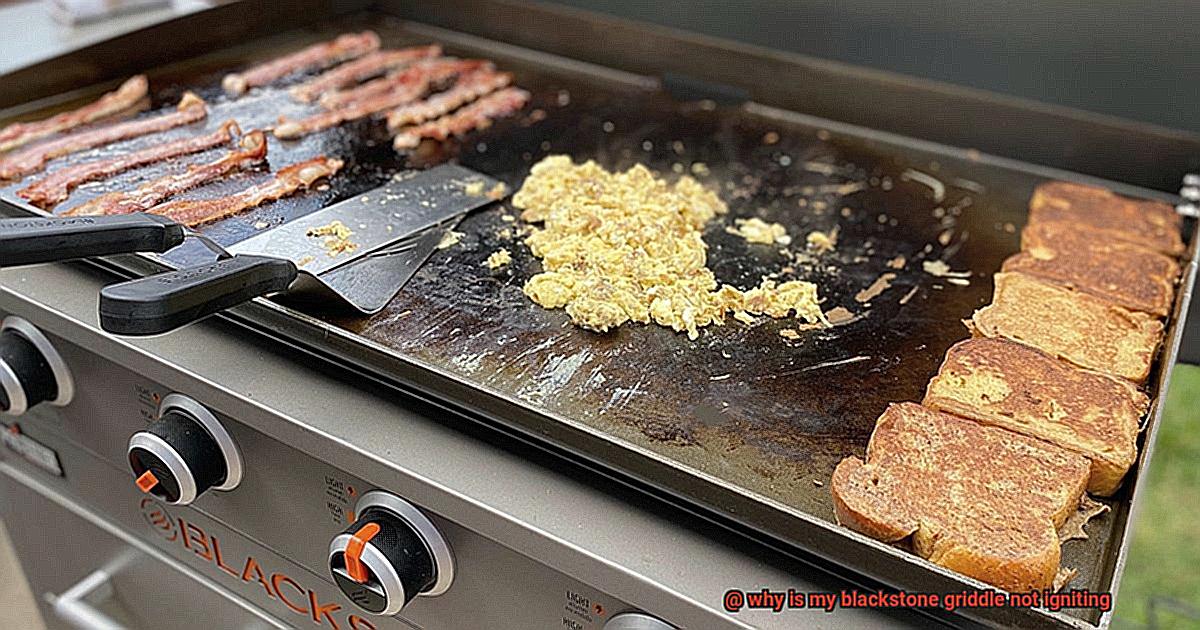
Moving on to electrodes – those tiny metal rods near the burners that produce the spark. Over time, they can become dirty or corroded, which can interfere with their ability to produce a strong spark. Thankfully, this is an easy fix – simply clean the electrode with a wire brush or replace it if it’s damaged.
Now let’s talk wiring. Faulty wiring between the battery and electrode can prevent the spark from reaching the burner. Check all wires for signs of damage or looseness and repair or replace them as necessary.
Finally, gas flow can also impact your griddle’s ignition. If there isn’t enough gas flowing to the burner, it won’t ignite properly. Double-check that your propane tank is full and all connections are tight and secure.
Troubleshooting Tips for Blackstone Griddle Ignition
Before you start thinking about costly repairs or replacements, there are some simple steps you can take to troubleshoot the ignition system.
Step 1: Check your propane tank.
This may seem obvious, but it’s surprising how often people overlook this simple step. Make sure that the tank is properly connected and has enough fuel. A low or empty propane tank can cause ignition issues. If the tank is running low, replace it with a new one and try igniting the griddle again.
Step 2: Inspect the igniter.
The igniter is responsible for creating a spark that lights the gas in the burners. If it’s not working properly, then you won’t be able to ignite your griddle. Check if the battery in the igniter needs replacing or if there are any visible signs of damage or wear and tear. If you’re unsure how to do this, consult your griddle’s user manual or contact customer support for assistance.
Step 3: Check for a clogged burner tube or blocked gas flow.
Debris and grease can accumulate in the tube over time, blocking the flow of gas and causing difficulty in igniting the griddle. Turn off the gas supply and remove the burners from the griddle. Inspect each burner closely for any signs of blockage or debris. If any are found, use a wire brush or toothbrush to clean them out thoroughly before reassembling the burners and trying to ignite the griddle again.
Step 4: Consider weather conditions.
Cold temperatures can affect propane vaporization and make it difficult for the griddle to ignite. In such cases, preheating the griddle for a little longer than usual before attempting to ignite it can help solve the problem.
Step 5: Check the regulator.
The regulator controls the pressure of gas flowing into the griddle and can sometimes become stuck or clogged. To fix this issue, turn off the gas supply and disconnect the regulator from the tank. Inspect it closely for any signs of damage or blockage and clean it out thoroughly if necessary.
Common Causes of Non-Igniting Blackstone Griddles
Don’t throw in the towel just yet – there are a few common causes of non-igniting Blackstone griddles that can be easily identified and fixed without professional assistance.
Firstly, let’s start with the basics. Check your fuel source – it may seem like a no-brainer, but it’s often overlooked. A lack of propane or fuel could be the root cause of your non-igniting griddle. Ensure that your propane tank is turned on and has enough fuel to ignite the grill. If you’re using a fuel source, check that there is enough fuel in the tank and that the valve is open.
If your fuel source isn’t the issue, then a clogged burner tube could be to blame. Grease and debris can accumulate in the burner tube over time, preventing it from igniting properly. To solve this problem, remove the burner tube and give it a thorough clean with a wire brush or other cleaning tool.
Next up, let’s take a look at your ignition system. If it’s not functioning correctly, it won’t create the spark required to ignite the grill. Make sure that the battery in your ignition system is charged and replace it if necessary. You may also need to clean the spark electrode or replace it entirely if it’s damaged.
Lastly, if none of these steps work, then a faulty regulator could be the culprit behind your non-igniting Blackstone griddle. The regulator is responsible for regulating the flow of gas from the propane tank to the burners. If it’s not working correctly, it will prevent the grill from igniting properly. In this case, you’ll need to replace the regulator with a new one.
How to Prevent Your Blackstone Griddle from Not Igniting Again
Grilling on your Blackstone griddle is an excellent way to cook your favorite meals outdoors. However, it can be frustrating when your griddle won’t ignite. To prevent this from happening again, there are a few steps you can take.
Clean Your Griddle Regularly
The buildup of food particles and grease can clog the ignition system, making it difficult for your griddle to light up. To prevent this from happening, clean your griddle after each use. Use a scraper and a soft cloth to remove any debris or excess grease.
Check Your Propane Tank
A low propane tank can cause weak flames or prevent your griddle from igniting altogether. Check the propane tank to ensure that there is enough gas in it. You may also need to replace the tank if it’s been sitting for a long time or has been damaged.
Check Gas Line Connections
Ensure that the connection between the propane tank and the griddle is securely fastened and that there are no leaks. You can check this by applying soapy water to the connection and looking for bubbles. If you see bubbles, there is a leak, and you’ll need to fix it before using your griddle again.
Inspect The Ignition Switch
If you’ve checked the propane tank and gas line connections and they’re all in good working order, then it’s time to inspect the ignition switch. This switch may be faulty, which prevents your griddle from igniting. You can do this by removing the front panel of the griddle and checking for any loose wires or damaged components.
Turn Off All Knobs
Leaving a knob on can cause problems with the ignition system over time, so it’s important to turn them all off when you’re done using your griddle.
qc_btJDb5Ek” >
Conclusion
In conclusion, a non-igniting Blackstone griddle can put a damper on even the most enthusiastic cook’s plans. But don’t let it get you down – with our comprehensive guide to troubleshooting ignition problems, you’ll be back to flipping burgers and sizzling steaks in no time.
Start by taking a close look at your propane tank and regulator. Check for any signs of damage or blockages, and make sure there’s enough gas in the tank. Inspect your fuel line for visible wear and tear, and clear any obstructions from the gas ports of the burners.
Regular cleaning is crucial to avoid buildup that can clog small holes in your burner. If none of these steps work, it may be time to inspect your ignition system for issues like dead batteries or faulty wiring.
Remember that safety should always come first when dealing with gas appliances like a Blackstone griddle. If you’re unsure about anything or feel uncomfortable troubleshooting on your own, don’t hesitate to seek professional assistance.
Finally, take preventative measures by cleaning your griddle regularly and checking all connections before use. And always remember to turn off all knobs when not in use.
With these tips at your disposal, you’ll be able to diagnose and fix most ignition problems with ease.

